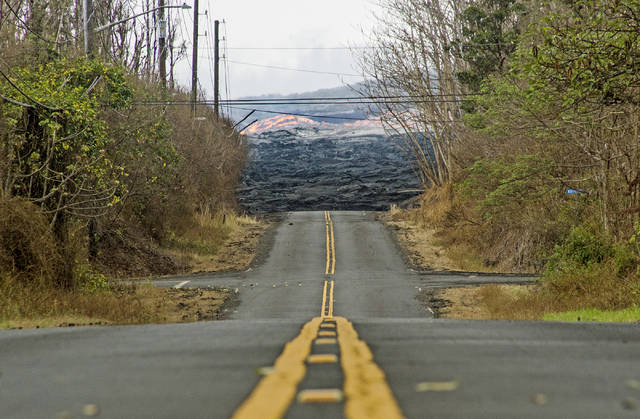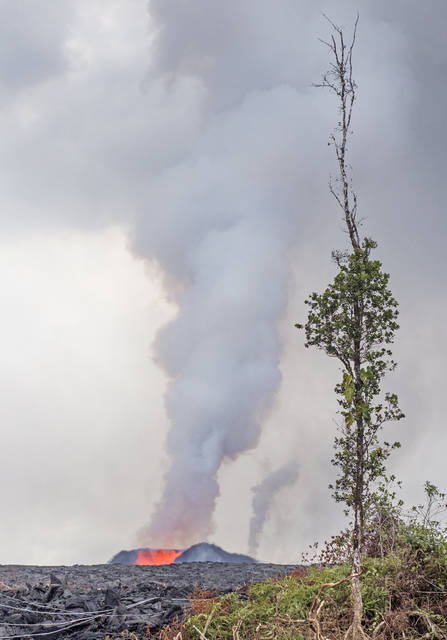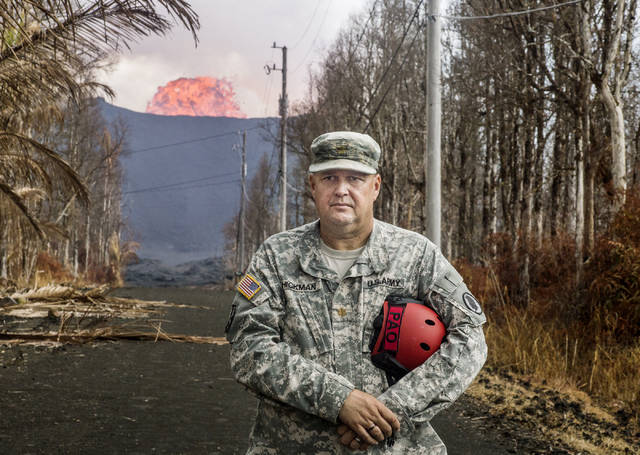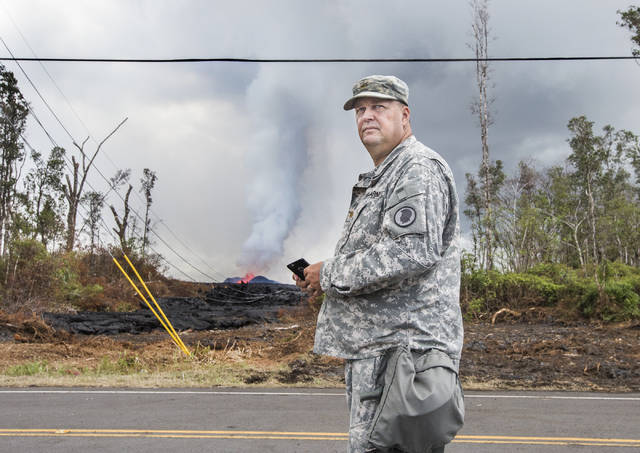Guardsman reflects on time spent in eruption zone




Major Jeff Hickman has had nine days off since May 7.
Major Jeff Hickman has had nine days off since May 7.
Every other day, Hickman said, has been spent managing public and media access to the lower Puna eruption zone in his capacity as Hawaii National Guard public affairs officer.
ADVERTISING
Wednesday, however, marked Hickman’s final day of his Big Island deployment. After making more than 50 tours into the eruption zone with media and Civil Defense groups, Hickman said he has seen more of the eruption than most on the island.
“I got to see (the lava) grow, I got to see it change,” Hickman said. “I’ve worn my mask more in the past month and a half than I have in my 27 years in the National Guard.”
Although Hickman also worked during the 2014 lava flow in Pahoa, as well as other disasters around the state over the years, this year’s eruption is exceptional because of its length and the rapidity with which it changes.
During a tour of Leilani Estates Wednesday, Hickman commented that every time he visits, something new about the terrain or the flow changes: cracks on roads widen, clouds of sulfur dioxide thicken or disperse, lava fountains shrink and grow. Some days were too dangerous to leave the vehicle, while others allowed for lengthy visits throughout the subdivision.
“It can range from destructive to beautiful to amazing to scary,” Hickman said.
Hickman said mayor Harry Kim wanted to ensure that media organizations from around the world — at one point, more than 40 media groups were on the island at once — to see “the human side” of the disaster.
“When you’re standing in front of a lava flow, it’s not just ‘ooh’ and ‘aah’,” Hickman said. “The residents of that house might be right on the side watching.”
While Hickman said he was fortunate to be one of the small percentage of people on the island to witness the lava firsthand without losing property, he has not been immune to the lava’s trauma. Hickman said that, on his previous returns home, he suspected that he was suffering from a minor form of post-traumatic stress disorder.
“When I go home, it’s a slower pace and people there aren’t affected by the lava, but it my mind I’m still here,” Hickman said. “It boggles your mind sometimes, like ‘don’t you know what’s going on?’”
“Some of my guys also have that,” he continued. “Like, they go back to Oahu and there might be a fountain where somebody hit a fire hydrant and you’ll see a picture of it and be like ‘that’s no big deal. That’s not lava, you can turn it off.’”
Hickman said he is lucky to have a supportive family — during his deployment on the Big Island, he missed Mother’s Day, Father’s Day and his daughter’s birthday — and hopes his crew members can also adjust to the slower pace of life when their deployments end.
Hickman’s replacement, Maj. Christine Rosalin, will take over his duties after he leaves. But although the lava flow has seemingly settled into a stable pattern of late, Hickman does not predict that the National Guard will leave the eruption anytime soon.
“Seeing it from May 7 until now, I have a feeling that it’s not going to stop,” Hickman said. “There’s going to be another big change, something’s going to happen. I’m confident in the Guard and the county that they’ll be able to react to it.”
Email Michael Brestovansky at mbrestovansky@hawaiitribune-herald.com


